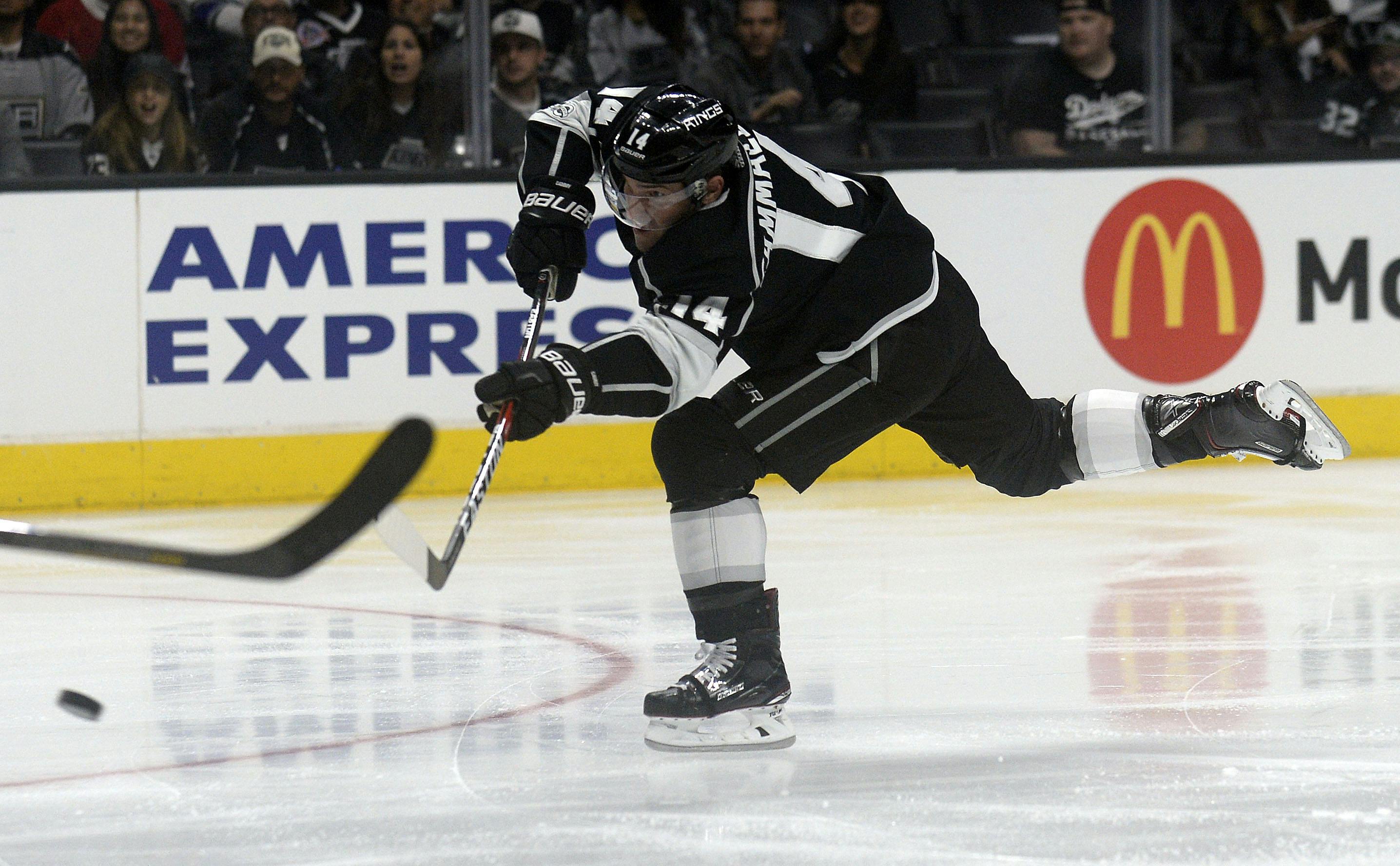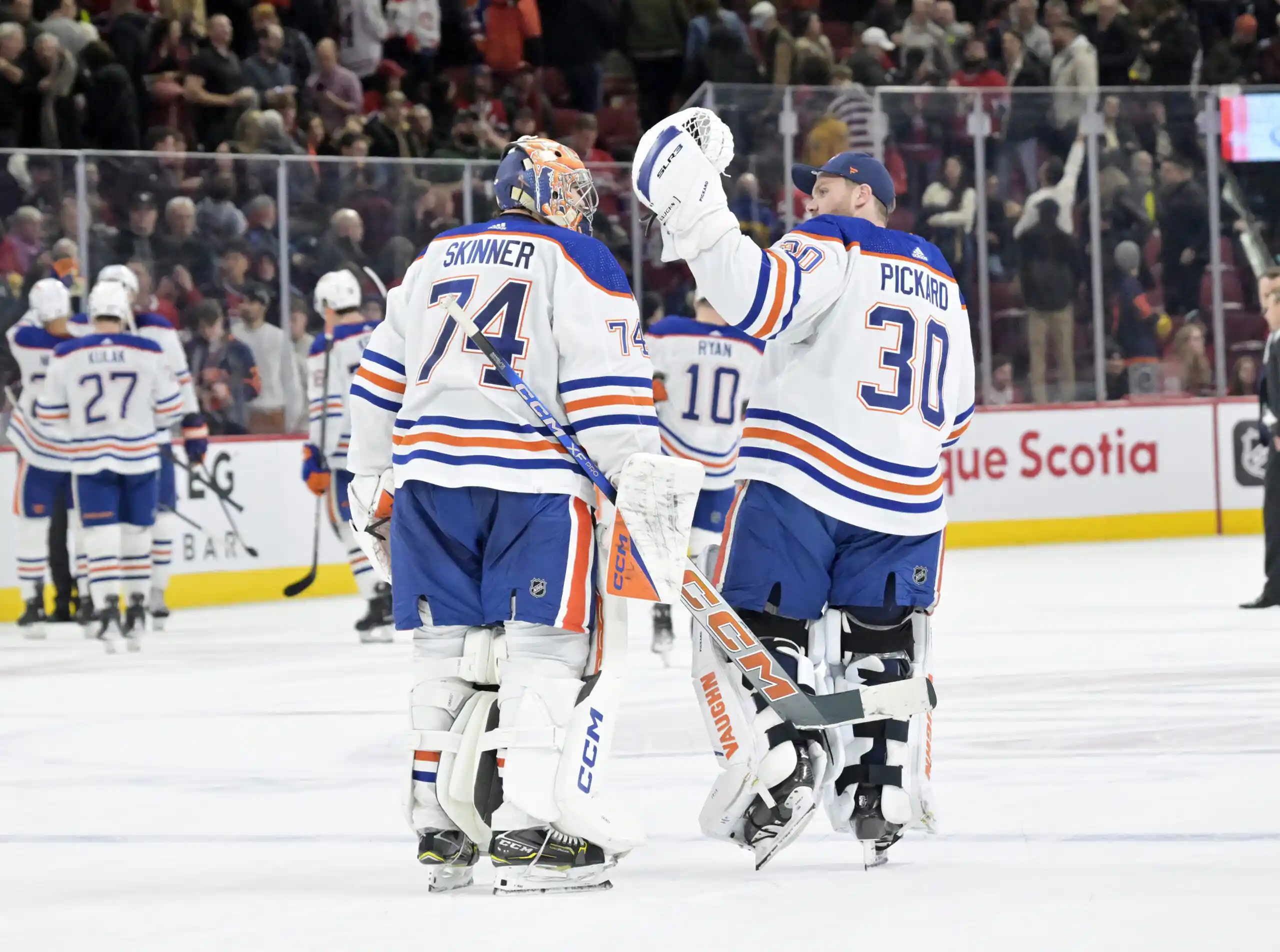Trading Good Process for Shooting Talent

With the Oilers making an actual trade there will be lots of focus on the players as they leave and enter Edmonton. Surely there will be many different perspectives on both Jussi Jokinen and Mike Cammalleri as well as why they were traded for each other. To me, it comes down to the Oilers desperately needing some shooting talent in the bottom six.
To start, though, I want to make it clear that I did not consider Jussi Jokinen to be a disaster as an Oiler. Despite his inability to get on the score sheet, a bunch of other good things were going on when Jokinen was on the ice. The story of a player is not entirely measured in goals, assists, and points – However, I will grant that they are important too.
There has been a consistent message from a few highly regarded Oiler analysts for both major networks that Jokinen was too slow and the coaching staff couldn’t trust Jokinen out there on the ice — that McLellan was not comfortable with Jokinen. If that’s the case then I have even more questions, because when you look at results, he should be praised for his defensive acumen.
When Jokinen was on the ice the Oilers allowed just 51.5 shot attempts against per 60 minutes. That rates as the third-lowest on the team. Translated into actual shots against, that was just 21.4 shots against per 60 minutes. When Jussi Jokinen was on the ice, the opposition was stymied. Naturally, that translated into a very low goals against per 60 minutes as well, just 1.71 goals against per hour of play. Frankly, it should be even lower but Talbot’s save percentage was merely OK with Jokinen on the ice. It could have been better.
As a defensive specialist, Jussi Jokinen was doing a fantastic job and anyone who claims otherwise or makes up an excuse that he was too slow to gain the trust of the coach is ignoring reality.
On the other side of the ledger, Jokinen’s on-ice numbers were middle of the road for the team. The now ex-Oiler winger was sixth among Oiler forwards in shot attempts for and shots for per 60 minutes. In terms of a percentage as a whole of what the team gave up vs what the team created when he was on the ice, he was a team leader.
Jokinen had a 58.4% shot attempt ratio. He had a 62.4% unblocked shot attempt ratio. He had a 63.2% shot ratio. When Jokinen was on the ice, the Oilers controlled the puck.
What they didn’t do was score.

Oct 4, 2017; Edmonton, Alberta, CAN; Ottawa Senators defensemen Dion Phaneuf (2) tires to block a shot from Edmonton Oilers forward Jussi Jokinen (36) during the first period at Rogers Place. Mandatory Credit: Perry Nelson-USA TODAY Sports
Despite out-shooting clubs 86-50 during 5v5 play, the Oilers scored just a single goal with Jokinen out there. You would expect at least five or six goals over that span. Jokinen himself was shooting the puck 7.27 times per 60 minutes (seventh among Oiler forwards) and yet he couldn’t squeeze a drop.
The low shooting percentages both personally and on-ice contributed to Jokinen’s PDO being a brutal .932 as an Oiler. When the narratives get spun, they do so around PDO more than they do around the other metrics that the player actually has some input into. When Jokinen is too slow and untrustworthy it’s because this number is below 1.000 and not because the team was getting beaten with Jokinen on the ice.
Mike Cammalleri is the opposite of Jokinen in a lot of ways. He shoots slightly less 5v5 at just 7.03 per hour. He was second last in shot attempt ratio (43.1%). He was second last in unblocked attempt ratio (42.8%). He was ninth of 11 in shots for ratio (46.4%). In all cases he was among the worst King forwards in the “against” metrics, meaning when he was on the ice, the opposition was feasting on the Kings.
Defensively, we should be concerned about his ability. However, offensively, Mike Cammalleri has been a consistently good shooter over the course of his career. He has a career 12.3 shooting percentage and has been shooting 12.5% on the year. He ought to find himself on the second PP unit and as a trigger man for Ryan Strome, presumably.
Given that the Oilers lost shooting talent in the Eberle deal last summer and never replaced it in the lineup, this trade tries to correct that by robbing the club of solid possession and replacing it with more potential to score. Long term, I have concerns about what Cammalleri adds compared to what he takes away. However, there’s no denying that the bottom six needed a boost in raw shooting talent.
The Kings have always been a process-first organization who have not shied away from a high possession, low scoring game. They managed to get on of Edmonton’s top possession forwards for one of their worst and they’re banking that the percentages will start to come around for Jokinen. That’s the gamble they’re making by trading a guy with seven points in 15 games for a guy with one point in 14.
Edmonton just needs someone who can bury the puck and potentially give their PP a boost. If Cammalleri can stay healthy then that ought to be him.
Recent articles from Matt Henderson





